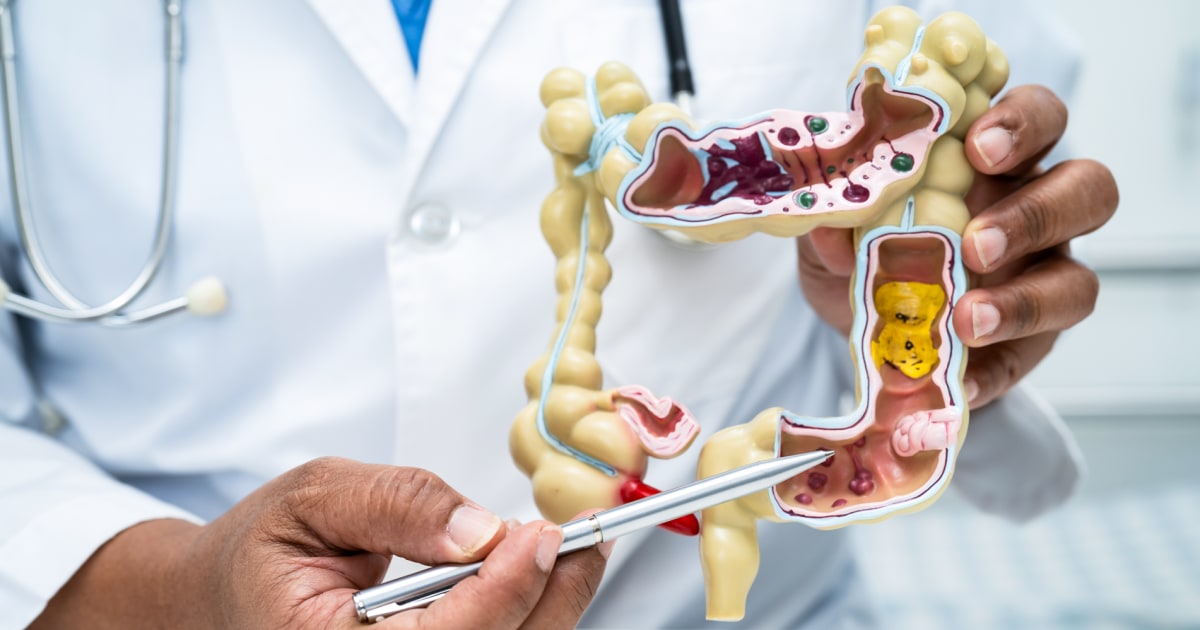A type of bacteria that causes dental plaque could be behind a form of colorectal cancer that is resistant to treatments, according to a study published this Wednesday in the journal Nature.
The bacteria in question, which appears to protect tumor cells from anti-cancer drugs, was found in 50% of the tumors analyzed in the study. According to experts, this discovery could pave the way to new treatments and possibly other detection methods.
Colon cancer is the second leading cause of cancer death in the United States and is expected to kill more than 53,000 people in the country in 2024, according to the American Cancer Society.
Rates are increasing sharply among younger people: The percentage of people under 55 diagnosed with colon cancer almost doubled between 1995 and 2019, and was from 11% to 20% of cases. Most seriously, these cases were often diagnosed in later and more aggressive stages.
Experts are still struggling to explain the change.
“Colorectal cancer is very treatable when caught early, but cases in younger people are increasing and we don’t know why,” said Dr. Flavio Rocha, surgical oncologist and physician-in-chief of the University of California’s Knight Cancer Institute. Oregon Health and Sciences, which was not involved in the study.
The new research does not answer that question; It is too early to implicate this bacteria in the increase in cases in young people. Besides, most of the patients in the study were over 50 years old.
But the results raise “the question of whether there are elevated levels of this bacteria in early-onset colorectal cancer, which is increasing worldwide for unknown reasons,” said Susan Bullman, a co-author of the study and an assistant professor of human biology at the Fred Hutchinson Cancer Center in Seattle.
Bacteria that keep a secret
Scientists have suspected a relationship between a bacteria called Fusobacterium nucleatum, and the growth of colorectal cancer. The bacteria is usually only found in the mouth, away from the colon.
In the oral cavity, it is one of the most common types of disease-causing bacteria, linked to gum disease and plaque buildup. But it was not clear how it could resist the journey through the intestine and end up invading tumor cells in places in the body where these types of bacteria do not usually survive.
In the study, Bullman and his colleagues analyzed the bacterial composition of nearly 200 colorectal tumors, as well as stool samples from more than 1,200 people, half of whom did not have cancer.
What they discovered was that the bacteria was a little more complicated than thought. Specifically, it has two distinct subspecies, one of which appears to protect colorectal tumors from cancer-fighting drugs.
“It acts like a cape,” Bullman explained.
Normally, immune cells called T cells recognize and attack tumor cells. But this bacteria recruits another type of immune cell into cancer cells, one that allows them to escape from T cells.
The undetectable subspecies was present in 50% of the colorectal tumors collected in the study. The corresponding stool samples also had high amounts of the subspecies.
“Patients with high levels of this bacteria in their colorectal tumors have a much worse prognosis,” Bullman said. “They don’t respond as well to chemotherapy and have a higher risk of recurrence.”
The subspecies can also cause cancer to form.
When Bullman and his team transplanted the subspecies into mice, it appeared to cause the formation of precancerous polyps, one of the first warning signs of colorectal cancer, although he added that this causality has not yet been demonstrated in humans.
The researchers also found clues that could answer the question of how Fusobacterium nucleatum can reach the colon in the first place: The bacteria appears to be able to survive the journey through the stomach, withstanding what scientists previously thought would be a toxic dose. of stomach acid.
New targets for treatment
The discovery of the subspecies has enormous implications for targeted therapies already underway, said Dr. Michael White, associate professor of Colorectal Surgery at the University of Texas MD Anderson Cancer Center in Houston.
“There is evidence that if you eliminate these bacteria, there is more response during treatment,” explained White, who was not involved in the new research. Clinical trials are planned soon to test whether treating a patient with antibiotics before chemotherapy leads to a better response, she added.
Knowing more about which bacterial subspecies, including Fusobacterium nucleatum, are dangerous will allow for a more targeted approach.
This could include prevention.
Scientists may be able to identify the subspecies while it is still in the mouth and give the person antibiotics at that time, to eliminate it before it reaches the colonBullman explained. Even if antibiotics cannot successfully eliminate the bacteria from the mouth, its presence there could serve as an indication that someone has a higher risk of aggressive colon cancer, he added.
Rocha agreed. In the future, part of colorectal cancer screening could be something as simple as an oral swab, she said.
Understanding the newly identified subspecies could also lead to the development of new antibiotics that specifically target this bacterial subtype, rather than eliminating both forms of the bacteria or all bacteria in the mouth.
There is also the possibility of taking advantage of bacteria to fight cancer.
The subtype has already shown that it can penetrate cancer cells quite easily, so it would be possible genetically modify bacteria to deliver anti-cancer drugs directly to tumors, Bullman explained.
According to Rocha, researchers are just beginning to study the ways in which a person’s microbiome influences their risk of cancer, but it is one of the most important concepts being studied in current oncology research.

